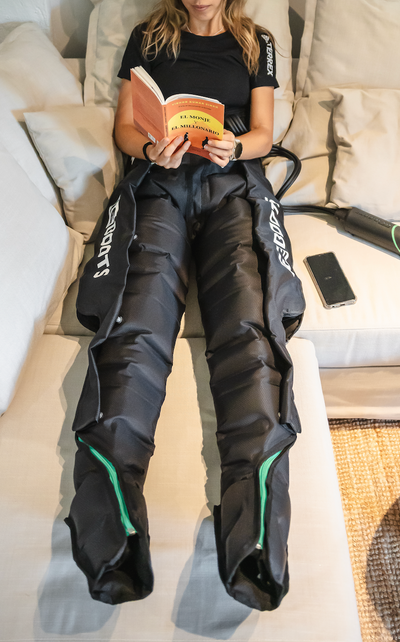Performance knows no age – but the way we recover changes. From 30, 40, or 50+, you quickly notice: The body needs more time to recover after training or exertion. That's exactly why recovery becomes the crucial discipline to stay fit, strong, and flexible in the long run.
In this article, you'll learn how the body changes over the years – and how you can specifically support your performance with smart recovery.
The body in transition – what changes with age
As we age, many regenerative processes in the body slow down. The production of growth hormones decreases, which directly affects muscle building and cell repair. After intense training sessions, the body takes longer to recover – the recovery windows become larger.
Blood circulation and collagen production also decrease, impacting mobility and muscle supply. Injuries or microtraumas take more time to heal. At the same time, the elasticity of connective tissue decreases, making muscles more prone to tension.
But that's no reason to slow down training – rather a signal to give recovery the same importance as training itself.
The key lies in regeneration
Many athletes train regularly but pay too little attention to recovery. Yet it is precisely the moment when the body becomes stronger, more resilient, and more resistant.
Without sufficient recovery, the risk of overload, chronic fatigue, or small micro-inflammations increases, which can reduce performance and motivation in the long run.
Targeted regeneration helps to maintain the body's natural adaptability. It supports mobility, stability, and the feeling of staying "in balance" – regardless of age. Those who regularly regenerate train smarter instead of harder.
With the right methods, regeneration can be specifically promoted
Effective recovery methods for all ages
Sleep, stress, and hormones – the invisible factors
The older we get, the more our lifestyle affects regeneration.
Sufficient sleep is essential, as the body recovers most intensively during this phase. During deep sleep phases, growth hormones are released, supporting cell processes and muscle renewal.
Conversely, a consistently high cortisol level due to stress inhibits these recovery mechanisms. Small routines like evening walks, digital breaks, or breathing exercises can help slow down everyday life and improve sleep quality.
Tip: A regular sleep rhythm and a calm environment often work wonders – without complicated methods.
Tools & routines for smart recovery from 30+
Regeneration can be integrated into everyday life with the right tools.
Recovery Boots, Thermo Sleeves or Cryo systems support recovery after training or work, without much time investment. Used regularly for just 15 to 30 minutes, they help you consciously unwind and recharge.
Even for working professionals or parents with little free time, a routine can be established: a short walk after work, 20 minutes of compression massage, or a warm bath are often enough to keep the body in balance.
Modern technologies like app-controlled programs or mobile devices make Recovery easier than ever – whether at home, in the studio, or on the go.
Recovery is the new superpower
As you age, training and recovery processes change – but those who listen to their bodies and give themselves intentional breaks stay strong, flexible, and capable for longer.
Recovery is not a step back, but a step forward. It's the foundation for consistent performance, sustainable health, and real training success – at any age.




